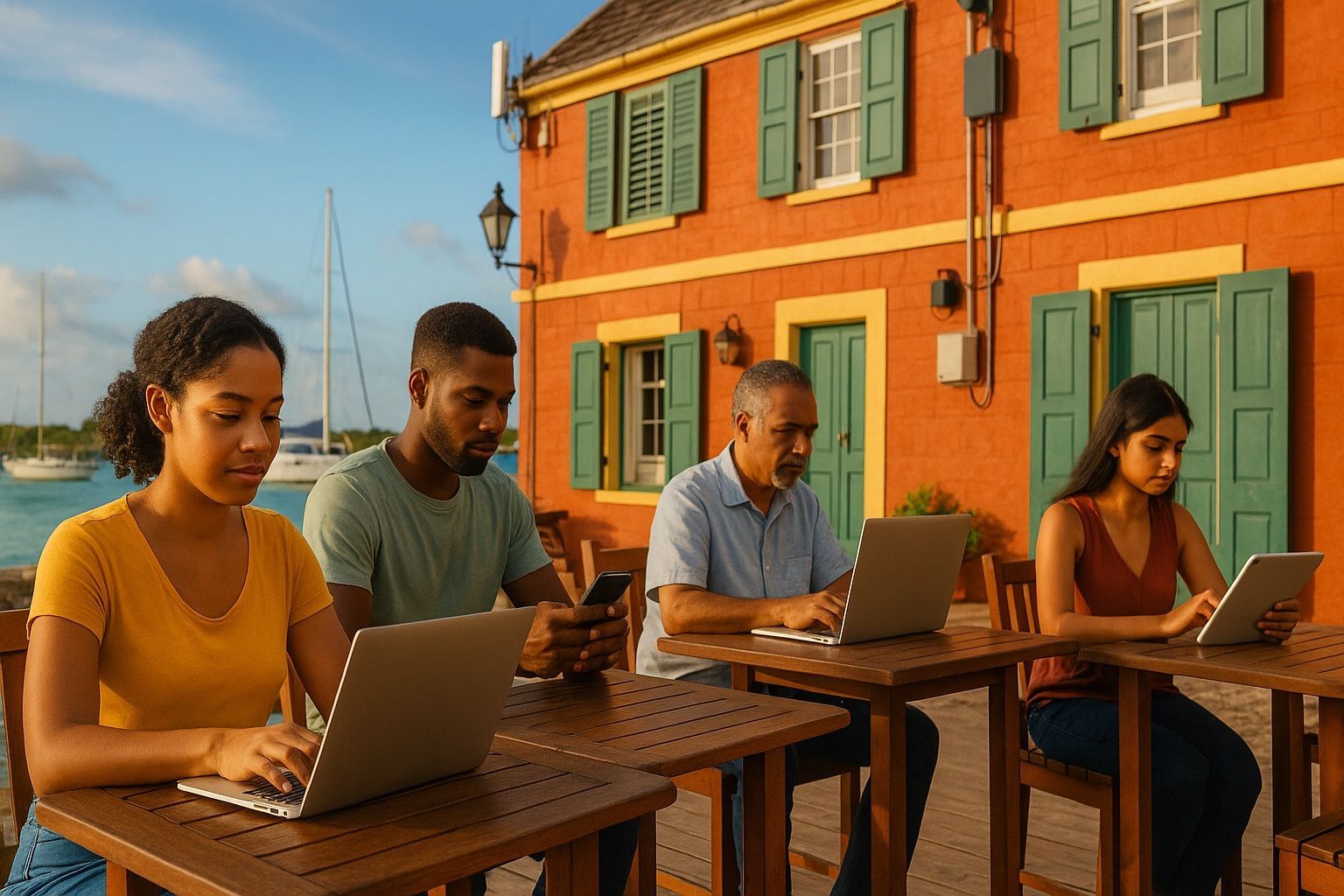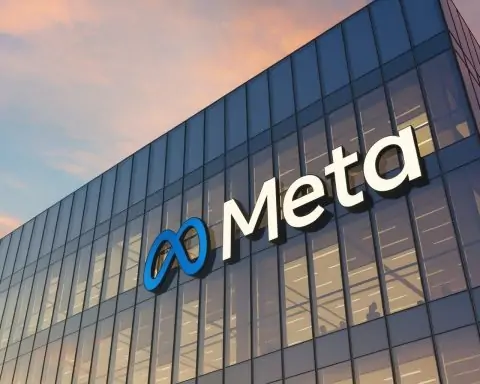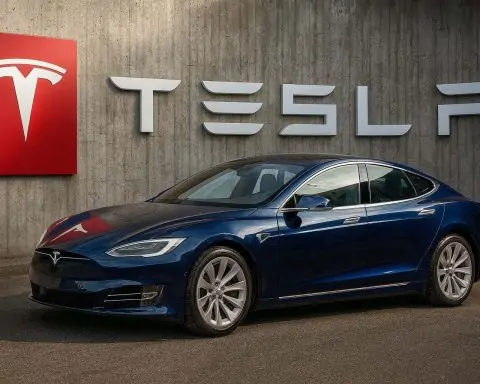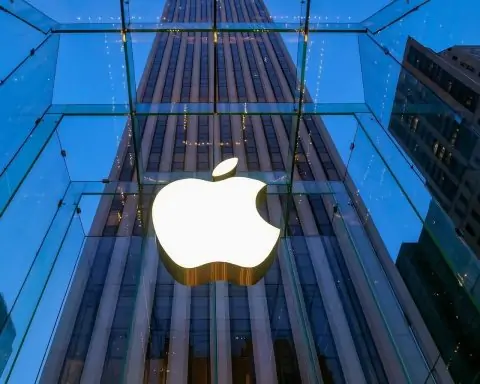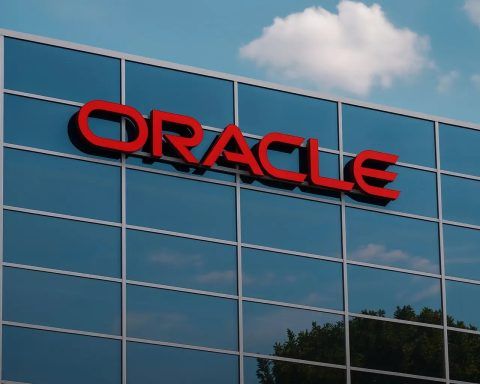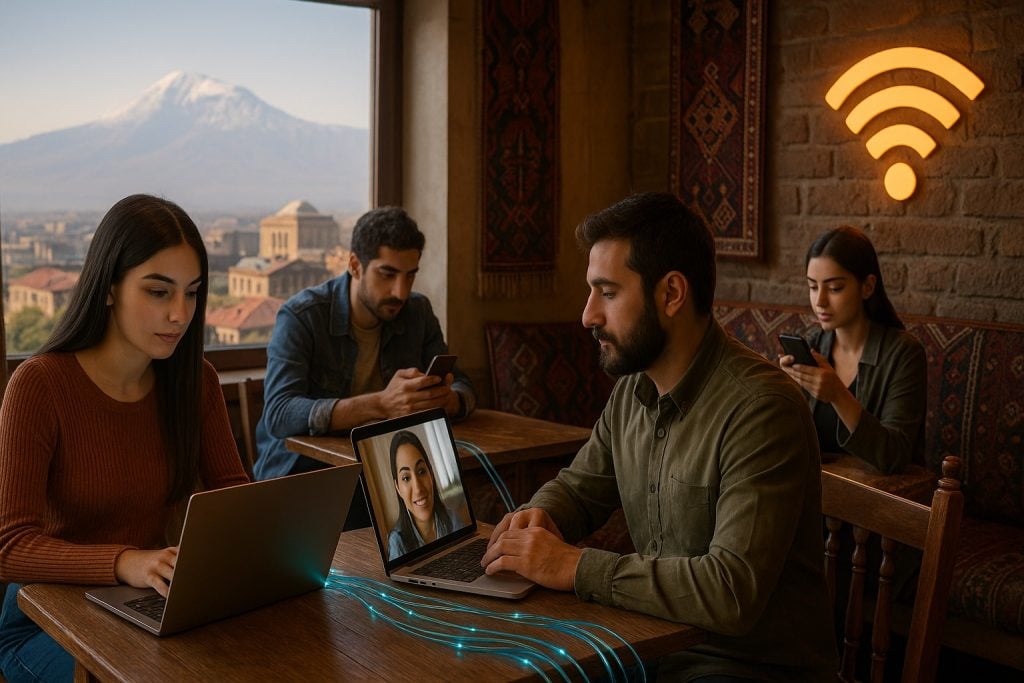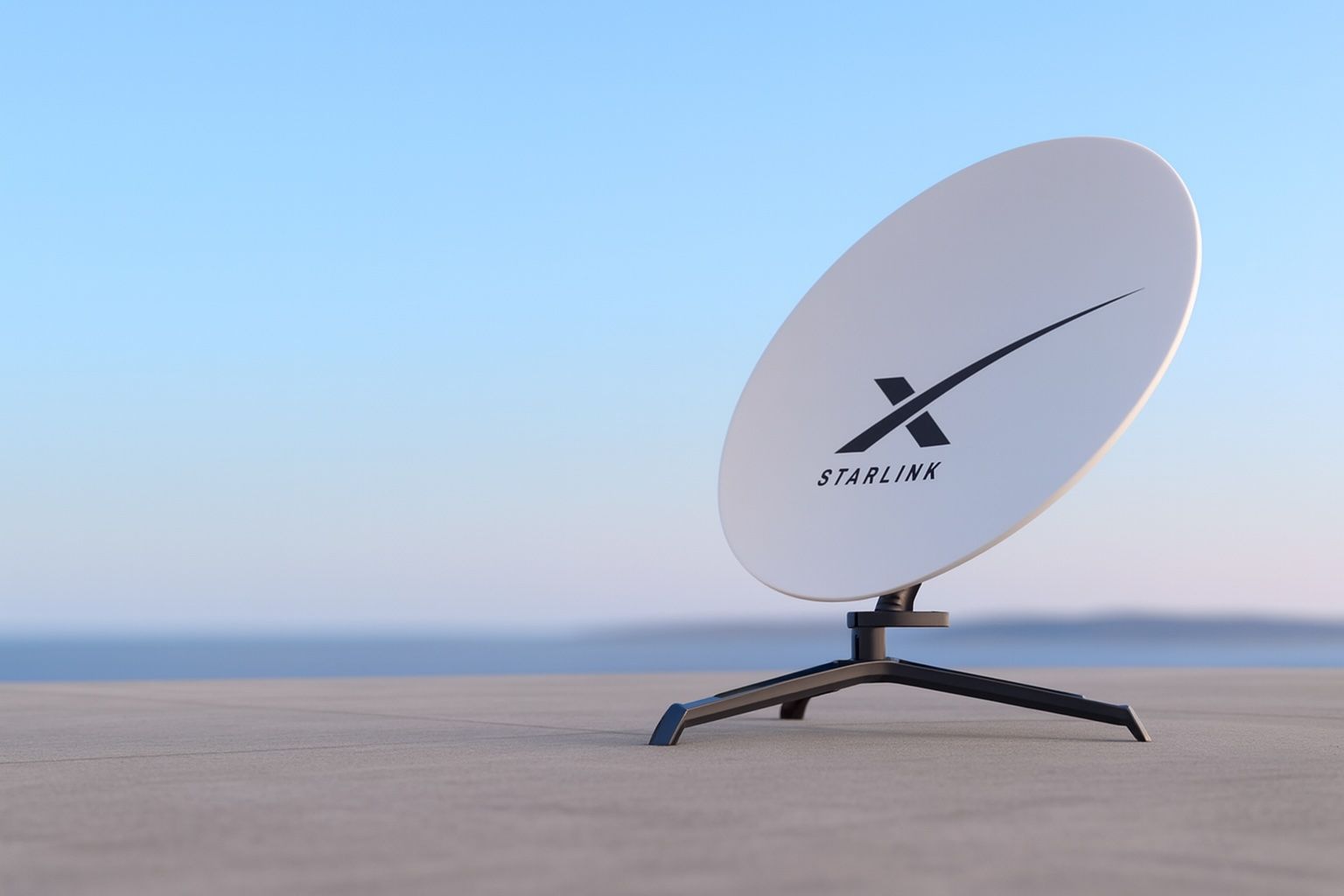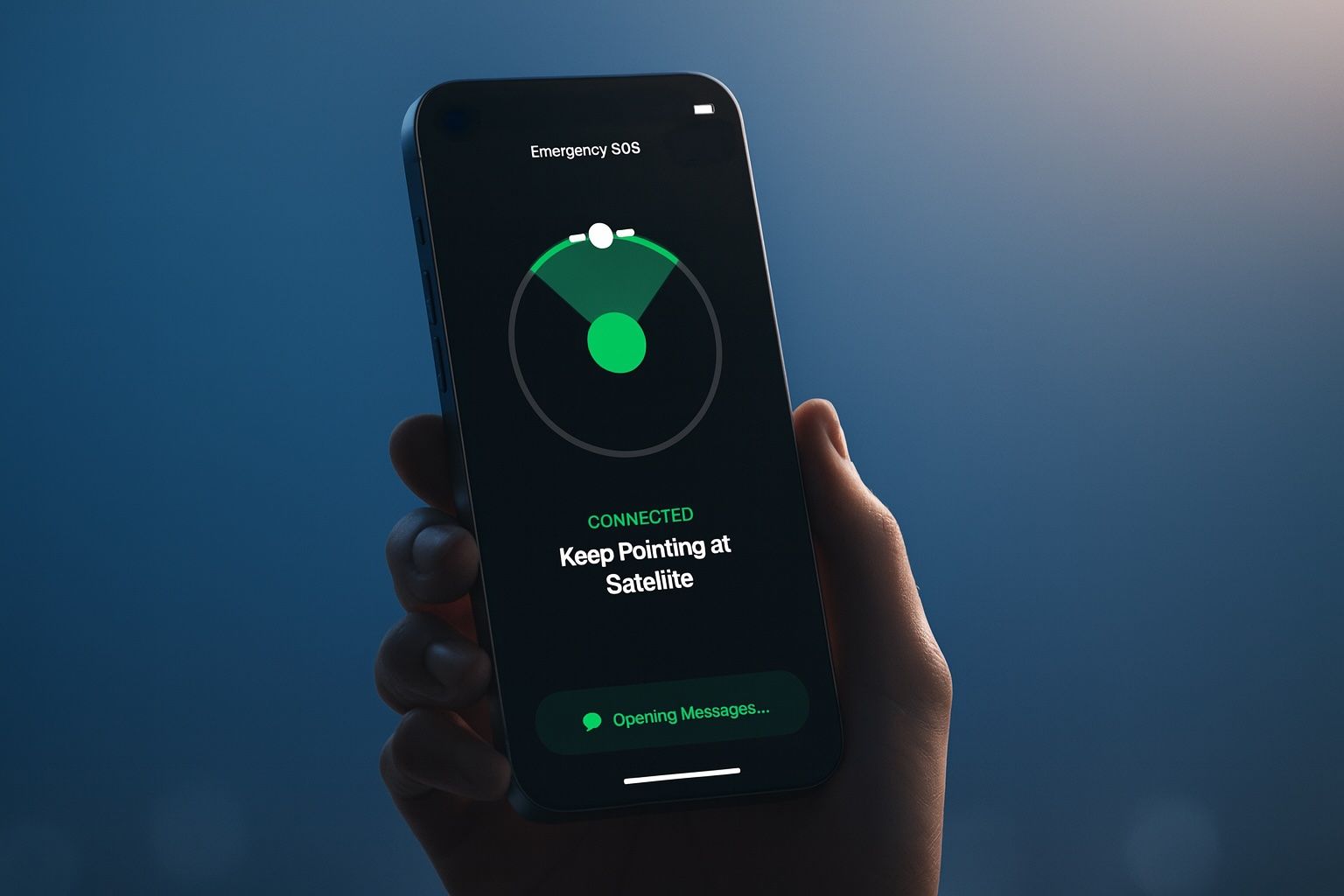- Antigua and Barbuda has a population just under 95,000 and about 91% of Antiguans were online by early 2024.
- The fiber-to-the-home rollout was completed in 2022, with APUA’s fiber network delivering up to 500 Mbps and basic fiber prices cut from XCD 335 for 20 Mbps DSL to under XCD 100.
- The market is dominated by three ISPs—APUA Inet, Digicel, and Flow—with APUA controlling about 64% of broadband connections.
- As of mid-2024, commercial 5G had not launched, but 4G remains strong and networks are being upgraded across the islands.
- Starlink was slated to roll out by end of 2024 and by early 2025 could offer 100 Mbps+ downlink with around 30 ms latency.
- The CELIA submarine cable is a 3,700 km link with 170 Tbps capacity connecting Antigua to Florida, Puerto Rico, Aruba, and Martinique, expected to be live by Q3 2027.
- In 2020 the government injected US$30 million into APUA to fund fiber rollout and to purchase an underwater cable for faster international connectivity.
- Universal access programs include Connect Antigua with free public Wi‑Fi and school connectivity, and by 2021 26 clinics and health centers were equipped with free Wi‑Fi.
- Network modernization includes IPv6 deployment and security via ROA, with 72% of IPv4 prefixes and 67% of IPv6 prefixes having ROA, plus about 22,000 registered .ag domains and ongoing DNSSEC efforts.
- Barbuda currently relies on 4G and fixed wireless, with a plan to extend FTTH to every Barbudan home and CELIA providing redundant international capacity for resilience.
Antigua and Barbuda, a twin-island nation in the Caribbean, has undergone a dramatic internet transformation in recent years. With a population just under 95,000, the country boasts a high rate of internet use – by early 2024, roughly 91% of Antiguans were online [1]. Mobile phone usage is ubiquitous, with active mobile subscriptions more than double the population (215% penetration in 2025) [2]. This surge in connectivity is driven by major upgrades to infrastructure, including island-wide fiber optic rollout and expanding 4G mobile networks. However, challenges remain: service quality and affordability have historically lagged behind, sparking government intervention and new competitors on the horizon. Below, we delve into Antigua’s internet infrastructure, providers, speeds, policies, and how it compares with its Caribbean neighbors.
Infrastructure: Fiber, Mobile, and Wireless Networks
Antigua’s internet backbone has rapidly modernized from aging copper lines to cutting-edge fiber optics. Fiber-to-the-home (FTTH) now reaches virtually all households on the main island of Antigua, thanks to a nationwide project completed in 2022 [3]. The state-owned utility (APUA) replaced old DSL lines with a fiber network capable of multi-gigabit speeds [4]. In practice, residential subscribers can purchase fiber plans up to 500 Mbps, a huge leap from the single-digit DSL speeds of the past.
On the mobile side, 4G LTE networks blanket most of Antigua and Barbuda, ensuring that even rural and remote areas have wireless broadband access. Three operators – APUA’s Inet Mobile, Digicel, and Flow (Cable & Wireless) – provide mobile voice and data services over 3G/4G. As of mid-2024, 5G has not yet been launched commercially (the country remains on predominantly 4G networks [5]), but APUA has been testing 5G technology with plans for future rollout [6]. In the meantime, 4G coverage is strong across the islands, and the government has pushed initiatives like community Wi-Fi and wireless hotspots to fill any gaps in coverage for students and rural residents (more on that below).
Wireless broadband beyond the mobile carriers also plays a niche role. In the past, fixed wireless and Wi-Fi projects were deployed to connect communities: for example, Digicel and the government partnered on a Wi-Fi broadband initiative to connect 3,000 homes and schools as early as 2010 [7]. Today, with fiber and LTE widely available, such fixed wireless services are largely complementary – used in areas awaiting fiber (such as parts of Barbuda) or as backup links.
Key Internet Service Providers and Plans
Despite its small size, Antigua and Barbuda has a handful of ISPs, though the market is dominated by the state provider. The Internet Society rates local ISP competition as “very poor,” with APUA alone commanding about 64% of the broadband market [8]. Here are the main players and what they offer:
- APUA (Inet) – The Antigua Public Utilities Authority operates Inet Home and Inet Mobile services. It provides fixed broadband over its new fiber network, as well as mobile service. APUA’s FTTH covers all of Antigua and is being extended to Barbuda [9]. Speeds range from 50 Mbps up to 500 Mbps on fiber plans. Notably, APUA slashed broadband prices with the fiber rollout – the entry-level plan plummeted from XCD 335 (USD 124) for 20 Mbps DSL to under XCD 100 (USD 37) for a basic fiber package [10], vastly improving affordability. Current Inet Fibre residential packages include 50 Mbps, 75 Mbps, 100 Mbps, and 500 Mbps tiers (see table below). APUA also offers bundle deals (e.g. voice minutes and mobile data with home internet) and has positioned itself as the “best and fastest” provider after heavy government investment.
- Digicel – A major Caribbean telecom, Digicel provides mobile 4G LTE service nationwide and also markets Digicel+ Home Internet. Its home broadband offerings in Antigua include fixed LTE modem plans and, in some areas, fiber service (Digicel has rolled out FTTH in select neighborhoods). For example, Digicel offers a home LTE plan of ~15 Mbps with a 350 GB monthly cap for around XCD 172 [11]. In markets where Digicel has deployed fiber, speeds up to 100–300 Mbps are advertised, though it’s unclear how extensive fiber coverage is in Antigua. Digicel holds roughly 23% market share in internet services [12], serving many mobile-only users and some home internet subscribers.
- Flow (Cable & Wireless/LIME) – Flow (part of Liberty Latin America) was once the incumbent telecom but has a smaller footprint today. Flow provides mobile service (it shares some cellular infrastructure) and had legacy fixed lines. However, with APUA’s dominance in fixed broadband, Flow’s share is only about 4–5% [13]. It may still serve some corporate clients or areas with older copper or coax systems. For consumers, Flow’s impact is mainly as an additional mobile operator. (The Antiguan Prime Minister in 2020 lambasted Flow and Digicel for “crappy, expensive service” before the APUA fiber overhaul [14].)
- Other ISPs – A smaller local company, ACT (Antigua Computer Technology) accounts for a few percent of connections [15], likely via wireless or business broadband. There are also regional satellite and VSAT providers available (see the satellite section). Overall, the ISP choice is limited, with the government-owned APUA leading in both coverage and value.
Table: Sample APUA Inet Fibre Residential Plans (Eastern Caribbean Dollars, XCD)
| Plan Name | Download/Upload Speed | Monthly Price (XCD) |
|---|---|---|
| Ultra 50 | 50 Mbps down / 25 Mbps up | $193.00 [16] [17] |
| Ultra 75 | 75 Mbps down / 35 Mbps up | $268.00 [18] [19] |
| Ultra 100 | 100 Mbps down / 50 Mbps up | $332.00 [20] [21] |
| Ultra 500 | 500 Mbps down / 250 Mbps up | $999.00 [22] [23] |
APUA plans include a landline minutes bundle; $1 USD ≈ 2.7 XCD. The fiber network is capable of up to 10 Gbps, leaving room for even faster tiers in future [24].
Despite APUA’s lower pricing, internet costs remain relatively high for many locals. In 2024, a basic fixed broadband plan cost about 3.46% of GNI per capita (above the 2% affordability target) [25]. Mobile data plans were somewhat more affordable at ~2.3% of GNI per capita [26]. This underscores that while prices have fallen, connectivity is still a significant expense for low-income households.
Coverage and Internet Penetration
Thanks to widespread infrastructure, Antigua and Barbuda enjoys broad coverage of internet services. On the main island of Antigua, virtually all populated areas can access broadband – either via fiber-to-the-home or via 4G wireless signal. Barbuda (the smaller sister island with under 2,000 residents) is catching up: APUA has stated that Barbuda will receive FTTH next after Antigua’s rollout [27]. In the interim, Barbuda relies on wireless links (microwave backhaul from Antigua and 4G mobile towers) to get online.
Overall internet penetration is estimated around 78%–91% of the population, depending on the measurement. As of January 2025, about 77.6% of people were “using the internet” (72.9k individuals) according to DataReportal’s analysis [28]. Other sources, including the Internet Society, have cited figures above 90% usage [29]. The discrepancy may be due to different definitions – but it’s clear that over three-quarters of Antiguans are online, a high rate comparable to the best in the Caribbean. The remaining offline population (perhaps 8–22% of people) likely includes the oldest residents, those in remote locales, and low-income households without service [30].
Notably, Antigua and Barbuda’s rural majority is not left behind in coverage. Only 24% of the population lives in urban St. John’s, while 76% are in “rural” areas and villages [31]. The fiber upgrade was nationwide, meaning even rural communities on Antigua have access to wired broadband. Mobile networks cover approximately 99% of the population (though indoor signal in some remote spots can be weaker – a point of past contention in spectrum allocation [32]). To address any remaining gaps, the government and ISPs have rolled out community Wi-Fi hotspots. For example, in 2020 the Cabinet directed APUA to install free Wi-Fi hotspots in communities where students lacked internet, with other ISPs joining the effort to ensure universal internet access for schoolchildren [33]. Many villages now have public Wi-Fi zones (e.g. at community centers or clinics) as a result of this push. By 2021, 26 public clinics and health centers across Antigua and Barbuda were also outfitted with free Wi-Fi for patrons [34], illustrating the commitment to connectivity as a public good.
In short, coverage is extensive: nearly every home can get online via fiber or 4G, and special programs target the few pockets or demographics that remain offline. The “digital divide” in Antigua and Barbuda is now less about access availability and more about affordability and digital literacy – ensuring everyone can afford service and has the skills to use it.
Internet Speeds, Reliability and Pricing
Antigua’s internet speeds have improved markedly with the advent of fiber, but there is still ground to cover to reach world-class speeds. Prior to the FTTH rollout, broadband speeds were sluggish – the prime minister quipped that private operators were selling “slow internet services” at high prices [35]. As of early 2024, median fixed broadband download speed was about 33–35 Mbps [36] [37], a ~23% increase over the previous year [38]. Upload speeds on fixed lines averaged around 19 Mbps [39]. These figures reflect the growing base of fiber users, though many may still be on lower-tier plans (50 or 75 Mbps packages).
Despite progress, Antigua ranked near the bottom of the Caribbean in fixed broadband speed in Q1 2024 – Ookla’s regional index put Antigua and Barbuda’s 35 Mbps median download as one of the slowest, alongside much larger but less-connected markets like Cuba [40]. In contrast, regional leaders like Trinidad & Tobago, Bermuda, and Cayman averaged well over 100 Mbps. This is likely to change as more Antiguan households upgrade to fiber plans; we can expect local speeds to climb toward regional norms in coming years.
Mobile network speeds are generally lower than fixed. With only 4G available, typical mobile download speeds are in the 20–30 Mbps range (Digicel reported ~33–34 Mbps median mobile speeds in recent years in its markets) [41]. That’s decent for mobile, but far below what 5G could eventually offer. Latency on-island is low on wired connections (suitable for streaming and video calls), but international latency can spike if undersea cables are congested or rerouted, a common challenge for island nations.
Service reliability has historically been a pain point. Users have complained of frequent dropouts and slowdowns, especially under the old DSL networks [42]. Power outages during storms and hurricane season also impact uptime, as backup power for telecom sites isn’t always consistent. However, the new fiber network has improved reliability; fiber is less susceptible to electrical interference than copper, and APUA’s control over infrastructure means quicker repairs. The government has also emphasized resilience – for example, burying fiber lines underground where possible to protect them from winds, and investing in a new submarine cable (the CELIA system, detailed below) to provide redundant international capacity in case one link fails [43] [44]. These steps aim to make Antigua’s internet not only fast but dependable even in the face of natural disasters.
In terms of costs, Antigua’s internet pricing, while improved, remains on the high side relative to income. We saw APUA’s fiber plans ranging from ~$70 to $370 USD per month for 50–500 Mbps. Mobile data is often sold in packages (e.g. 1 GB, 5 GB plans) or unlimited bundles at premium prices. By one metric, a basic broadband plan is 3.5% of monthly GNI per capita in cost [45], and a low-use mobile plan is ~2.3% of GNI [46] – several times higher than in developed countries. The government recognizes this and has pushed APUA to keep prices low. Indeed, the 2022 fiber rollout cut entry-level prices by over 70% [47], a significant relief for consumers. As competition slowly increases (with potential new entrants like satellite providers), there is hope that prices will trend downward while speeds and quality go up.
Government Initiatives and Digital Policy
The government of Antigua and Barbuda has been highly proactive in shaping the internet landscape – essentially engineering an “internet revolution” from the top down. Prime Minister Gaston Browne’s administration has made digital infrastructure a national priority, both to improve citizens’ lives and to attract business investment. Key government initiatives include:
- Investment in APUA (Public Broadband) – Frustrated with private telcos, the government in 2020 announced a US$30 million injection into APUA to build out broadband infrastructure [48]. This funding directly enabled the fiber-optic network rollout and the purchase of an “underwater fiber cable” link for faster international connectivity [49]. Essentially, the state decided to compete head-on with Digicel and Flow to ensure quality service, famously saying “we cannot rely on them… so we’re putting money in APUA” [50] [51]. The result has been a more modern, fiber-rich network under public control.
- National Digital Transformation Agenda – Antigua and Barbuda is pushing to digitize all aspects of society. The Prime Minister has pledged “complete digitalization of public services by 2030”, meaning citizens will be able to do all government transactions (passports, taxes, permits, etc.) online [52]. This e-government drive is supported by the UN and requires robust internet access nationwide. The government has also set up a new Ministry of Technology and piloted digital initiatives in health, education, and tourism to leverage connectivity. According to the UN’s e-government readiness index, Antigua scores about 59% on digital public service development [53] – there’s room to grow, but efforts are underway.
- Regulatory Reforms – Telecom regulation falls under the Ministry of Telecommunications. The government has worked to redistribute spectrum licenses more equitably. In the past, Digicel and Flow “hoarded” the best spectrum (low-frequency bands) [54], hindering APUA’s mobile coverage. In response, authorities intervened to reclaim and allocate spectrum to APUA in 2019–2020 [55] [56]. This allowed APUA’s Inet Mobile to improve its 4G coverage and eventually plan for 5G. The government has also indicated it will welcome new technologies and operators that benefit consumers – subject to licensing. (For example, they appear open to satellite services like Starlink, unlike a few other countries that have banned it pending licenses.)
- Universal Access Programs – As noted earlier, programs to ensure universal internet access have been launched. The Connect Antigua initiative provides free Wi-Fi in public locations (parks, libraries, government offices). During the pandemic, the government distributed tablets/laptops to students and partnered with ISPs to get every student online via community hotspots [57]. Such measures highlight that internet is seen as a necessity, not a luxury, in policy planning. There is also a Universal Service Fund collected from telecom revenues that is used to finance rural connectivity projects, ICT training, and digital literacy campaigns.
Overall, government intervention has been a catalyst for better internet. The combination of public infrastructure investment, policy reforms, and a vision for a digital economy has set Antigua and Barbuda on a faster track than it might have achieved through market forces alone.
Bridging Access Gaps and the Digital Divide
Even with high overall connectivity, Antigua and Barbuda faces challenges in ensuring equitable access for all citizens. One concern is the urban-rural divide, though in this case it’s more about usage than availability. Rural residents have the networks available, but some may lack devices or the know-how to fully benefit. The government’s free Wi-Fi hotspot program specifically targeted low-income communities (e.g. Grays-Green, Yorks) and schools, bringing thousands of first-time users online [58] [59]. By establishing community computer centers and free broadband in these areas, Antigua greatly boosted internet adoption in poorer villages. Today, many of those initial gaps have closed – as evidenced by the country’s relatively high internet use among developing countries.
Another aspect is affordability for the lowest earners. While APUA’s fiber plans offer great value per megabit, even $37 XCD 100/month can be too much for families living paycheck to paycheck. For them, the free community Wi-Fi at clinics or the ability for students to access school Wi-Fi after hours is crucial. The government’s ongoing challenge is to reduce costs further or provide subsidies for connectivity (for example, some nations have vouchers or social tariffs for broadband – Antigua may consider similar schemes in the future).
Barbuda, the smaller island, can be viewed as a microcosm of the digital divide. After being devastated by Hurricane Irma in 2017, Barbuda’s infrastructure (including telecom) had to be rebuilt. Currently, Barbuda has 4G coverage and some fixed wireless links, but residents likely have fewer high-speed options than Antiguans. The plan to extend fiber to every Barbudan home will be a milestone in closing that gap. Until then, Barbudans might rely on satellite broadband or microwave backhaul, which can be less reliable. The new submarine cable project (CELIA) will also directly connect to Barbuda’s vicinity, potentially allowing Barbuda to tap high-capacity links in the future [60] [61].
In summary, Antigua and Barbuda recognizes that universal internet access is key to social and economic inclusion. Through targeted initiatives (free Wi-Fi, school connectivity, community centers) and infrastructure expansion, they are steadily shrinking the digital divide. The remaining issues of cost and usage skills are being addressed through policy and education. By 2030, if all goes to plan, every citizen – whether in the capital or a rural hamlet – should have affordable, high-quality internet and the ability to use it effectively.
Satellite Internet: Starlink and Beyond
One of the most exciting developments on the horizon is the advent of satellite broadband services in Antigua and Barbuda. Until recently, satellite internet in the Caribbean was limited to expensive, high-latency VSAT systems used by remote businesses, yachts, or in emergencies. That is changing with the arrival of Low Earth Orbit (LEO) constellations like SpaceX’s Starlink.
Starlink has been rapidly expanding across Latin America and the Caribbean. As of late 2024, it was live in over 25 countries in the region [62] [63]. According to SpaceX’s rollout plan, Antigua & Barbuda was scheduled to get Starlink service by the end of 2024 [64]. Indeed, the Starlink availability map listed Antigua as “Coming Soon” and by early 2025 it is expected that residents can order Starlink kits. This means a user anywhere on the islands (even a boat off Barbuda or a hilltop farm) could get 100+ Mbps internet with low latency by connecting to Starlink’s satellite network. For context, Starlink’s speeds often exceed 100 Mbps down with ~30 ms latency, far outperforming older GEO satellites and even rivaling 4G terrestrial service [65] [66].
The potential impact of satellite internet is significant in Antigua and Barbuda:
- Expanded Coverage: While Antigua’s coverage is already good, Starlink can provide connectivity to any point – useful for tiny islets, off-grid homes, ships, or as backup during infrastructure outages. It adds an extra layer of resilience in hurricane season; even if local towers or cables go down, a satellite dish can stay connected to the world.
- Competitive Pressure: Incumbent ISPs may feel pressure to improve service and prices. In some Caribbean markets, incumbents have pushed back against Starlink’s entry – for example, in Belize regulators saw fierce objections from ISPs worried about losing customers [67]. Antigua’s regulators seem more welcoming, but we can expect Digicel and Flow to respond by highlighting their local support and perhaps adjusting prices. APUA itself might leverage Starlink for redundancy or to serve Barbudan customers until the fiber is ready.
- Niche Uses: The tourism and maritime industries could benefit. Antigua is a yachting hub; Starlink Maritime allows superyachts and cruise ships to have broadband at sea, meaning better connectivity for high-end visitors. Remote eco-resorts or scientific stations could also use satellite links where laying fiber is impractical.
Besides Starlink, other satellite players are eyeing the region. OneWeb, another LEO constellation, has partnered with distribution firms to offer services in the Caribbean (often via telecom companies). BusinessCom Networks and GlobalTT are advertising combined GEO/LEO solutions for island nations [68] [69]. In short, satellite broadband is becoming a viable third pillar of internet access alongside fixed and mobile. In Antigua and Barbuda, satellites will likely remain a niche or backup option for most (given fiber and mobile are cheaper for daily use), but they provide a critical option of last resort and for specialized needs. The government has signaled it will incorporate satellite connectivity into its digital strategy, especially for disaster recovery and linking Barbuda or other remote spots.
Impact so far: In early-adopter Caribbean markets, Starlink has shown impressive results. In the nearby Bahamas, Starlink users get ~96 Mbps, significantly higher than the national fixed broadband median of 58 Mbps [70]. We can anticipate similar outcomes in Antigua – early Starlink customers (perhaps remote villa owners or tech enthusiasts) could suddenly enjoy speeds competitive with fiber. This “leapfrogging” via satellite could prod local ISPs to accelerate 5G rollout and offer gigabit fiber tiers to stay ahead. It’s a healthy development for consumers, as long as regulators ensure a level playing field.
Map of the upcoming C.E.L.I.A. submarine cable system, which will link Antigua with Florida, Puerto Rico, and other hubs. Antigua’s APUA is a consortium partner in this high-capacity cable, slated for service by 2027 [71] [72].
Technological Trends and Innovations
Antigua and Barbuda is riding several tech trends that promise to further enhance internet service:
- Next-Gen Submarine Cables: Reliable international connectivity is the lifeline for island internet. Antigua currently connects via the Eastern Caribbean Fiber System (ECFS) and other regional cables, but bandwidth has been limited. A new venture – the Caribbean Elite Alliance (CELIA) cable – is set to change that. This 3,700 km subsea cable (illustrated above) will directly link Antigua to Florida, Puerto Rico, Aruba, and Martinique, with a massive capacity of 170 Tbps (8 fiber pairs × 22 Tbps each) [73] [74]. APUA is a key partner, and the system is expected to go live by Q3 2027 [75]. CELIA will greatly improve international bandwidth and network resilience for Antigua – no more bottlenecks during peak hours, and failover routes if one path goes down. The project is touted to “help bridge the digital divide and strengthen our position in the global information economy” [76]. In the meantime, Antigua is also party to other cable upgrades and is exploring satellite backhaul to ensure the country is never cut off.
- Transition to 5G Mobile: Although not here yet, 5G is on the horizon. APUA and possibly Digicel have conducted test trials of 5G, and the government’s equitable spectrum policy in 2019 freed up bands that could be used for 5G services [77] [78]. Once 5G rolls out (potentially in the next year or two), users can expect much faster wireless data – theoretically gigabit speeds – and lower latency. This could unlock new use cases like Internet of Things (IoT) sensors for agriculture (important for some Antiguan farmers), smart city applications in St. John’s, and better broadband options for those who prefer wireless to a wired connection. Antigua would likely be among the earlier Eastern Caribbean nations to deploy 5G, given its small size (easier to cover) and the existing trials. For context, a few Caribbean territories like Puerto Rico and Bermuda have limited 5G, but most others are still awaiting it, so Antigua is not far behind the regional curve.
- IPv6 and Network Modernization: Behind the scenes, Antigua’s networks are modernizing in line with global trends. Telecom operators are adopting IPv6 addressing and implementing security measures like RPKI (Resource Public Key Infrastructure) to improve routing security. According to Internet Society Pulse, 72% of Antigua’s IPv4 prefixes and 67% of IPv6 prefixes have Route Origin Authorization (ROA) set up [79] [80] – a good sign of commitment to internet security best practices. Additionally, Antigua’s country-code domain “.ag” is increasingly used (22,000 .ag domains registered [81]), and efforts are underway to promote DNSSEC for safer domain resolution. These technical improvements won’t be obvious to end users, but they contribute to a faster, safer internet experience overall.
- Public Wi-Fi and Smart Services: The expansion of public Wi-Fi continues, with new hotspots and possibly island-wide Wi-Fi zones on the agenda. There’s talk of turning St. John’s into a “smart city” with free downtown Wi-Fi, smart parking meters, and digital tourism info points – all requiring robust internet. The tourism sector is also innovating: resorts now market “workation” packages, so reliable high-speed internet in hotels has become a must. Antigua’s telecoms have responded by enhancing coverage in hotel areas and offering short-term data passes for visitors (eSIMs, etc. for travelers). These micro-trends ensure that internet service remains aligned with economic opportunities, from tourism to remote work.
How Antigua & Barbuda Stacks Up in the Caribbean
When compared to its Caribbean peers, Antigua and Barbuda presents a mix of strengths and weaknesses in internet access:
- Internet Penetration: Antigua is among the top tier of Caribbean nations in terms of the proportion of citizens online. With ~78–91% internet use, it’s comparable to Barbados (one of the leaders) and ahead of larger countries like Jamaica or the Dominican Republic in percentage terms. Its mobile penetration (215%) is one of the highest in the region [82], reflecting the prevalence of dual-SIM users and multiple device ownership in Antigua – a common trait in small islands.
- Broadband Infrastructure: Few Eastern Caribbean countries have achieved island-wide fiber coverage as Antigua has. Many peers still rely partly on DSL or cable modems outside main towns. For instance, neighboring Dominica and St. Kitts have ongoing fiber projects but aren’t 100% fiber yet. Antigua’s aggressive FTTH rollout puts it ahead of the curve in infrastructure for a country of its size. Only wealthier islands like Barbados, Cayman Islands, or Bermuda boast similar or better fiber reach. This means Antigua has a solid foundation for future digital services.
- Speeds: As noted, Antigua’s average speeds currently lag some regional leaders. In Q1 2024 Antigua was bottom-ranked in fixed broadband speed (35 Mbps median) in the Caribbean benchmarking [83]. By contrast, Trinidad & Tobago clocked 110 Mbps and Barbados often exceeds 60–70 Mbps on median. However, Antigua’s speeds are poised to catch up as more users opt for higher-tier fiber plans. The country could realistically match Barbados’s level within a year or two. On mobile speeds, Antigua is similar to other 4G-only islands (20–30 Mbps range), but behind places that have introduced 5G (Puerto Rico’s mobile speeds are higher, for example). In essence, Antigua is a bit behind in delivered speed today, but the gap is likely temporary given recent upgrades.
- Pricing: Internet in small islands is generally expensive, and Antigua is no exception. In regional comparisons of broadband prices, Antigua tends to rank in the middle or higher end in cost. For example, a survey by The Cable UK (2023) on global broadband prices showed several Caribbean countries among the costliest. Antigua’s new prices have improved its standing, but countries like Trinidad or Suriname with government-subsidized providers sometimes offer cheaper plans. Barbados, with a competitive market, also saw prices drop. So Antigua has made progress – slashing the cost per megabit – yet the absolute monthly fee is still a burden for many, similar to its neighbors.
- Policy and Innovation: Antigua distinguishes itself by the level of government involvement. Some Caribbean nations have left broadband entirely to private sector (with mixed results), whereas Antigua’s public-private approach has yielded faster upgrades. This model is comparable to Saint Kitts and Nevis, which also empowered its state utility to deploy fiber, or The Bahamas, which formed a national company for fiber networks. Antigua’s digital government plans by 2030 are also relatively ambitious, rivaled perhaps by Barbados’s digital ID project or Grenada’s ICT initiatives. In embracing satellite internet, Antigua is moving in step with the region – e.g. Barbados, Jamaica, and others already have Starlink live [84], and Antigua is joining that cohort. The nation is also collaborating regionally via organizations like CARICOM and the Caribbean Telecommunications Union to harmonize spectrum policy and cybersecurity.
In summary, Antigua and Barbuda fares well in comparison: it has very high internet penetration, a modern fiber backbone, and forward-looking policies. Its internet speeds and prices, while not the best in the region yet, are on an improving trajectory. Importantly, Antigua’s story demonstrates how a small developing state can leap ahead by investing in technology and embracing competition. Many Caribbean observers now look to Antigua as a case study in rapidly transitioning from “crappy, expensive” internet (to quote the Prime Minister [85]) to fast, widely-available, and increasingly affordable connectivity in just a few years.
Conclusion
Antigua and Barbuda’s internet journey is truly a tale of transformation. In a short span, this island paradise has gone from spotty, slow connections to a near digital oasis blanketed in fiber optics and 4G signals. Residents can choose from gigabit-capable broadband at home or stream content on their smartphones from virtually anywhere on the islands. Government push and public enthusiasm for connectivity have created a virtuous cycle – better infrastructure enabling new digital services, which in turn drives demand for even better connectivity.
Challenges persist, of course. Ensuring everyone can afford internet, boosting average speeds to first-world levels, and safeguarding networks against hurricanes and cyber threats require ongoing effort. But Antigua and Barbuda has shown it is up to the task, leveraging bold public initiatives and welcoming technological innovation (from 5G to Starlink) to keep improving.
In the broader Caribbean context, Antigua’s experience underscores that geography is no longer destiny. Even a small island state can become a digital frontrunner with the right mix of policy, investment, and competition. As new undersea cables link Antigua to the world and new satellites soar overhead, the future looks bright – possibly 10 Gbps bright – for Antigua and Barbuda’s internet. The “Land of 365 Beaches” is well on its way to becoming a land of ubiquitous broadband, proving that paradise can indeed be connected at high speed, and that a tropical online revolution is possible with vision and fiber (literally!).
Sources: Antigua & Barbuda Digital Reports [86] [87]; APUA and local news releases [88] [89]; TeleGeography and regional analyses [90] [91]; Jamaica Observer & DCD (CELIA cable) [92] [93]; Loop News (universal student access) [94]; Internet Society Pulse [95] [96]; others as cited above.
References
1. datareportal.com, 2. datareportal.com, 3. www.linkedin.com, 4. fibre.apuainet.ag, 5. technewstt.com, 6. www.linkedin.com, 7. ictec.wordpress.com, 8. pulse.internetsociety.org, 9. www.linkedin.com, 10. www.linkedin.com, 11. www.digicelgroup.com, 12. pulse.internetsociety.org, 13. pulse.internetsociety.org, 14. www.284media.com, 15. pulse.internetsociety.org, 16. fibre.apuainet.ag, 17. fibre.apuainet.ag, 18. fibre.apuainet.ag, 19. fibre.apuainet.ag, 20. fibre.apuainet.ag, 21. fibre.apuainet.ag, 22. fibre.apuainet.ag, 23. fibre.apuainet.ag, 24. fibre.apuainet.ag, 25. datahub.itu.int, 26. datahub.itu.int, 27. www.linkedin.com, 28. datareportal.com, 29. pulse.internetsociety.org, 30. datareportal.com, 31. datareportal.com, 32. www.apua.ag, 33. www.loopnews.com, 34. antiguanewsroom.com, 35. www.284media.com, 36. datareportal.com, 37. technewstt.com, 38. datareportal.com, 39. www.statista.com, 40. technewstt.com, 41. technewstt.com, 42. www.284media.com, 43. www.jamaicaobserver.com, 44. www.jamaicaobserver.com, 45. datahub.itu.int, 46. datahub.itu.int, 47. www.linkedin.com, 48. www.284media.com, 49. www.284media.com, 50. www.284media.com, 51. www.284media.com, 52. islandinnovation.co, 53. pulse.internetsociety.org, 54. www.apua.ag, 55. www.apua.ag, 56. www.apua.ag, 57. www.loopnews.com, 58. ictec.wordpress.com, 59. ictec.wordpress.com, 60. www.jamaicaobserver.com, 61. www.jamaicaobserver.com, 62. blog.telegeography.com, 63. blog.telegeography.com, 64. blog.telegeography.com, 65. blog.telegeography.com, 66. blog.telegeography.com, 67. blog.telegeography.com, 68. www.bnamericas.com, 69. www.globaltt.com, 70. technewstt.com, 71. www.datacenterdynamics.com, 72. www.jamaicaobserver.com, 73. www.datacenterdynamics.com, 74. www.jamaicaobserver.com, 75. www.datacenterdynamics.com, 76. www.jamaicaobserver.com, 77. www.apua.ag, 78. www.apua.ag, 79. pulse.internetsociety.org, 80. pulse.internetsociety.org, 81. pulse.internetsociety.org, 82. datareportal.com, 83. technewstt.com, 84. blog.telegeography.com, 85. www.284media.com, 86. datareportal.com, 87. datareportal.com, 88. www.linkedin.com, 89. www.284media.com, 90. blog.telegeography.com, 91. technewstt.com, 92. www.jamaicaobserver.com, 93. www.datacenterdynamics.com, 94. www.loopnews.com, 95. pulse.internetsociety.org, 96. pulse.internetsociety.org
